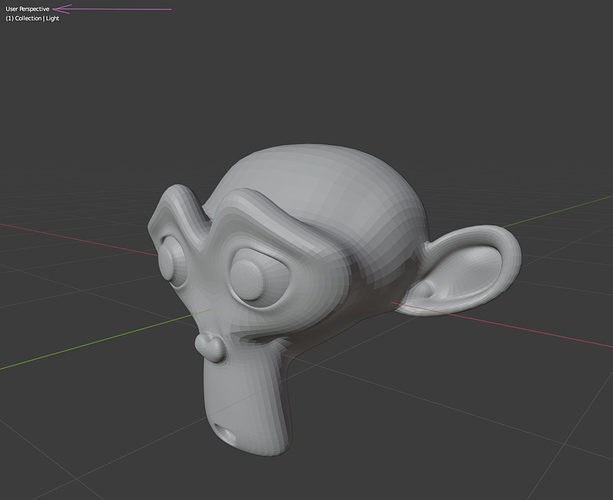Is there a way to access/edit transform values of the “User Perspective” camera?
I know you can access the focal length, clip start/end inside the Sidebar menu, but not sure where/if the same can be done with the location/rotation values…
I feel like I had this question in the past because I had reference photos that were taken with a physical camera with a focal length that wasn’t an orthographic projection. It seemed like if I took photos at a certain focal length, I should be aligning and modeling my object in that focal length, and I didn’t want to add an additional level of distortion to my workflow.
Now, this has been a long time since, but I think the answer is no. If this is what you need, I think what I ended up doing was adding additional cameras to the scene with my reference photos set as background images, and those cameras had the correct focal length and location in the world relative to my model compared to the real world. I’d just have to keep selecting them and switching them to be my active camera each time I wanted to “look through them.”
Could you tell us why you want to know the additional information about the user perspective camera?
the cam loc scale are in the N panel like all other objects
you may find other parameters n properties panel
happy bl
@RickyBlender, I believe @pmoreira is asking about the view camera that the User Perspective projection uses in the 3D viewport. Not the scene camera, the view camera.
not certain what this is then!
can you elaborate on what this “User Perspective” camera is ?
how do you get that user perspective camera ?
you mean the viewport render camera OpenGL !
if it is that then there is not much parameters for this !
see this thread here
thanks
happy bl
@Hunkadoodle @RickyBlender thanks for your replys, I appreciate the support.
Just to get which camera is which out of the way…as it shows int he actual viewport overlays, the name of camera or view I’m referring to is actually called “User Perspective” as show here with Suzanne looking screenLeft …
…not the scene or render camera as show here with Suzanne looking screenRight
I was hoping to have access to Users Perspective camera, and it seems after looking at your linked thread @Hunkadoodle, that this is NOT accessible… which is rather odd, when you have access to its clipping start/end and focal length, but not its location/rotations? does anyone know why this is?
The “scene” or “render” camera surves a very different purpose and I’m rather suprised we dont have the ability to access that cameras coordinates. I’m not trying to change Blender here, just trying to understand it a bit better, though it seems something rather trivial to have access to.
the loc rot is whatever you set the viewport manually
depends on zoom and where you are looking in viewport
happy bl
I’m there with you, @pmoreira. Sometimes I want to know why something is the way it is even if it’s been that way for decades, and I don’t like the answer “because it’s always been that way.”
But it isn’t all that odd. Setting a focal length manually with a numerical value is useful to users when they want to match a real-world lens’s focal length. Adjusting the clip start and end is useful to artists who want to be specific about the amount of their scene that their camera perspective displays while editing. The exact X, Y, Z coordinates are not as important as the average user is going to navigate the User Perspective view to whatever location in 3D space best allows them to see and edit meshes, objects, materials, etc. without manually having to type in numerical values.
The real answer to your question (and hopefully I’m not stepping on any developer’s toes) is that having that information available to the user would not serve any meaningful or useful purpose [that any developer or user has been able to come up with up to this point].
But again, if you could tell us why you want to know that information or why you think it might be helpful to a user, that can illuminate what you actually want to achieve so we can tell you whether or not there is a way to do it in Blender.

